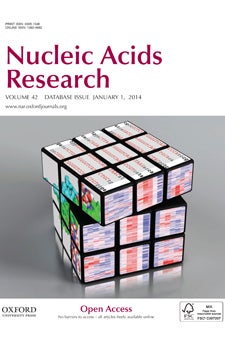A Trio of Awards
A pathbreaking researcher, Remo Rohs is being noticed in big ways.
In 2013, the assistant professor of computational biology at USC Dornsife published 10 studies related to his research on protein-DNA recognition. Now, three of Rohs’ recent articles have gained important recognition in the scientific community.
Two of his papers published in Proceedings of the National Academy of Sciences and Cell Reports received a RECOMB/ISCB Top-10 Paper award from the International Society of Computational Biology. This distinction honors the 10 most influential papers published in 2012-13 in the fields of regulatory and systems genomics.
In addition, one of his publications in Nucleic Acids Research was named an NAR Breakthrough Article, a distinction given to less than 1 percent of publications in the journal. Breakthrough articles represent the very best of the papers NAR publishes in terms of originality, significance and scientific excellence. Rohs’ research paper will be featured on the cover of the Jan. 1, 2014 issue.
The research, a novel integration of the fields of genomics and structural biology, sheds light on the mechanisms underlying how proteins recognize their DNA binding sites by translating genome sequences into three-dimensional structures.
“We are working in a new research field combining structural biology with genomics,” said Rohs, a Sloan research fellow who joined USC Dornsife in 2010 and has appointments in biological sciences, chemistry, and physics at Dornsife and in computer science at the USC Viterbi School of Engineering.
“This means that our research has to be recognized by both fields. It is difficult when you try to work between two established fields, and getting these three awards means the research has been recognized and accepted by the community. This is very important for fulfilling the mission I had for my research program at USC Dornsife.”
Rohs’ graduate students are co-authors on all three award-winning papers.

Nucleic Acids Research featured Rohs’ NAR Breakthrough Article, with USC Dornsife doctoral student Lin Yang as the lead author, on its journal cover. Disentangling the complex relationships between DNA sequence and structure is like solving a Rubik’s cube. This figure was designed by USC Dornsife doctoral student Tianyin Zhou based on a photo by Konstantin Datz.
Lin Yang, a computational biologist and Ph.D. candidate, is the first author of the NAR Breakthrough Article. One of the co-authors on all three award-winning papers, Tianyin Zhou, also a computational biologist and Ph.D. candidate, was recently hired by Google where he will apply machine learning in search algorithms.
“Zhou published a first-author paper in NAR earlier this year — it was an important basis for our other papers,” Rohs said. “It didn’t get an award but I think it was, methodologically, the most important paper. Sometimes papers don’t get awards because they push the boundaries and only when it is seen later it gains legitimacy. Then maybe the next paper gets an award.”
Rohs’ laboratory investigates how proteins bind to DNA, combining sequence and structural information to better understand protein DNA recognition. Previously, scientists have looked at three-dimensional structures of proteins bound to DNA, but only using small systems. His lab is working to derive structural features for the entire genome and identify how proteins, in this case transcription factors, bind to DNA and how they use both sequence and structure to find the correct target in the genome. Rohs and his team use machine learning for their studies.
“That’s important because if they bind to the wrong binding sites in the genome, then they would not be able to execute their function,” Rohs said. “We’ve been trying to understand not only qualitatively where transcription factors bind in the genome, but we’ve also learned to predict binding strength — how strongly a transcription factor binds to one site compared to another site. This is important to understand as a mechanism to understand biology.”
For Rohs’ NAR paper to be declared “breakthrough,” it required recommendations first by two scientific reviewers, then by the executive editor and an additional member of the NAR Editorial Board, and finally by both senior editors of the publication.
“The reviewers particularly appreciated how carefully the Rohs group studied their comments on the original variant of the paper and the database and how quickly and thoroughly Rohs and colleagues implemented the reviewers’ suggestions,” said Michael Galperin, NAR executive editor.
Boyana Konforti, editor-in-chief of Cell Reports, said that the reviewers recognized the importance of the question Rohs addressed in that award-winning article.
“Namely, the question of how transcription factors with what seem like identical DNA binding specificities have distinct in vivo binding preferences,” Konforti said. “One reviewer called the work ‘exciting’ and the other said the paper ‘breaks new ground in analyzing differential binding of transcription factors in the genome,’ which is the type of work we’re looking to publish in Cell Reports.”
Harmen Bussemaker, associate professor in the Department of Biological Sciences at Columbia University, was a co-author with Rohs for the Proceedings of the National Academy of Sciences article on DNA methylation, a process which can be associated with cancer.
“Remo’s powerful and unique computational tools for predicting DNA shape have enabled us to explore protein-DNA interaction from a new perspective,” Bussemaker said.
Two National Institutes of Health awards and the Alfred P. Sloan Foundation helped fund Rohs’ research. Rohs also just received notice that his R01 grant proposal will be funded, completing a trio of three NIH awards.